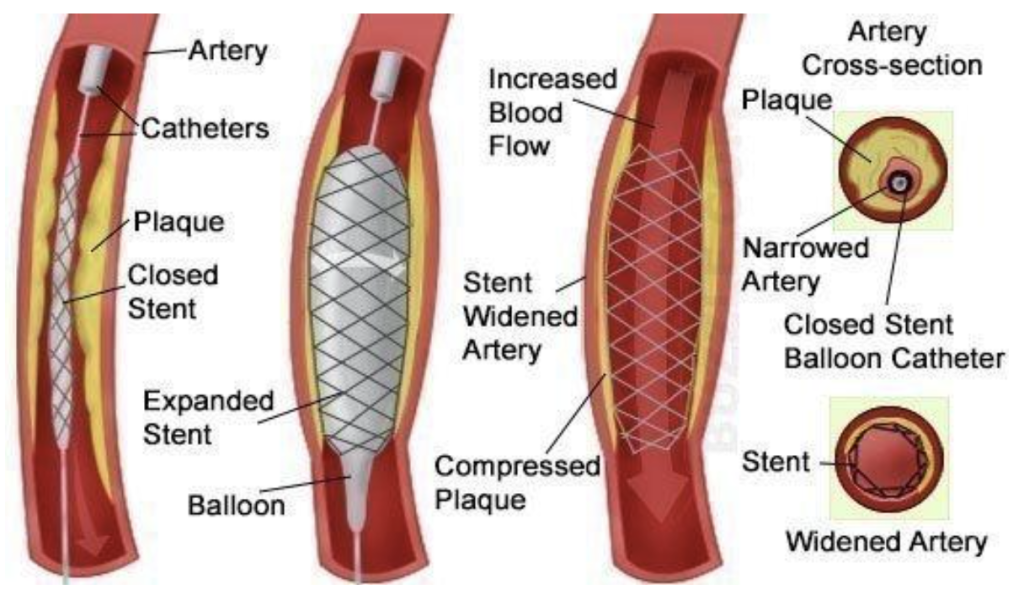Coronary Artery Disease
Overview
Coronary artery disease (artery blockage) affects over 2% of the Cypriot population. Men are around 6 times more likely to experience ischemic heart disease events than women.
According to the latest WHO data, published in 2020, Coronary Heart Disease deaths in Cyprus have reached 1,120, or just over 20% of the total deaths every year, which makes this disease the leading cause of death in Cyprus.
Each year cardiovascular disease causes 3.9 million deaths in Europe and is the leading cause of death.
The main risk factors for coronary artery disease are age, hypertension (high blood pressure), hypercholesterolemia (high cholesterol), diabetes, obesity, smoking, a family history, a sedentary lifestyle, and ethnic background.
Symptoms
Chest pain, or the sensation of pressure or tightness in your chest, and pain that radiates to one or both arms are the most common symptoms. Other common symptoms include shortness of breath, unexplainable sweating, fatigue, palpitations, vomiting and nausea.
These symptoms can occur at any time, such as during exertion or when resting. If you experience any of these symptoms, it is important that you contact your medical team immediately.
Diagnosis
If you are experiencing any of these symptoms, after a consultation, your medical team will recommend further testing. This can include:
An electrocardiogram (ECG), which measures the electrical activity of your heart. It can check whether your heart is beating regularly and show the pace of your heartbeat. Your doctor can see if you had or having a heart attack.
An echocardiogram, which uses ultrasound to create images of the beating heart. An echocardiogram can assess if the heart chambers and valves are healthy or damaged.
A Cardiac CT scan, which can visualize the details of the heart, show any calcium deposits which narrow arteries, and blockages in the heart arteries. Contrast, which is administered intravenously, helps create detailed pictures of the arteries. If contrast is administered, the test is called a CT coronary angiogram.
If your symptoms occur most often during exercise, you may be asked to take an exercise stress test. During this test you will walk on a treadmill or ride a stationary bike while taking an ECG. If an echocardiogram is also done while you do these exercises, the test is called a stress echo. Sometimes you may have medications administered for this test.
A nuclear stress test, which is like the exercise stress test detailed above, but which includes imaging during the ECG recordings. A nuclear stress test shows how your blood moves to your heart muscles at rest and during stress. A radioactive tracer is administered intravenously to help the heart arteries show up more clearly on the imaging.
A cardiac catheterization and angiogram test can show the blockages in your arteries. During a cardiac catheterization, an interventional cardiologist gently inserts a very thin, flexible tube (catheter) into a blood vessel, which is accessed through the wrist or groin. The catheter is then guided to the heart, with the help of X-ray images. Dye, which flows through the catheter, helps your blood vessels show up more clearly on the X-ray images and outlines any blockages.
Treatment
The treatment of your coronary artery disease depends on the extent of the blockages. Lifestyle changes, which include eating a low-fat, low-salt diet, and getting regular exercise, and medications may be prescribed to help manage and partially relieve your condition. If you have severe coronary artery disease which cannot be managed with medications, then your medical team will recommend surgical or other interventional treatments. These include PCI/Stenting of the coronary artery which contains the obstruction, or for more complex cases, Coronary artery bypass graft surgery (CABG).
PCI/Stenting is a percutaneous procedure that involves cardiac catheterization, where an interventional cardiologist gently inserts a thin, flexible tube (catheter) into a blood vessel, which is accessed through the wrist or groin. The cardiologist then deploys a very small metal cage that keeps the artery open.

For more complex cases, your medical team will recommend a coronary artery bypass graft (CABG) surgery. After a consultation, your cardiac surgeon will arrange all the necessary tests prior to the operation. During the operation, the patient undergoes general anesthesia. The surgeon will then bypass the obstruction in the coronary with a conduit (graft) harvested from a different part of the patient’s body, often from the leg, arm, or chest. After the operation, the patient will stay in our cardiac intensive care ward for 1-2 days while they recover, then they will be transferred to our regular ward. The average hospital stay after CABG is 5-7 days, but this varies depending on the patient’s pre-operative clinical condition.

Why GMI
At the GMI, we have a state-of-the-art facility for patients affected by cardiac diseases, which includes our Cardiovascular Diagnostic Center, Cardiology Catheterization Laboratory, Cardiac Surgery Theatre, Hybrid Theatre and Cardiac Intensive Care Unit.
Our team of internationally recognized heart doctors (cardioradiologists, cardiologists, cardiac surgeons and cardioanaesthetist) will guide you through the whole process, from your diagnostic work-up to your treatment and post-treatment care. We are committed to providing the best treatment options to each of our patients. The GMI team will never offer a simple “one size fits all” approach to any patient. We believe each patient’s case is as individual as they are and strive to find the best solution for each of our patients, taking their specific case and diagnosis, their lifestyle, and choices into account.



